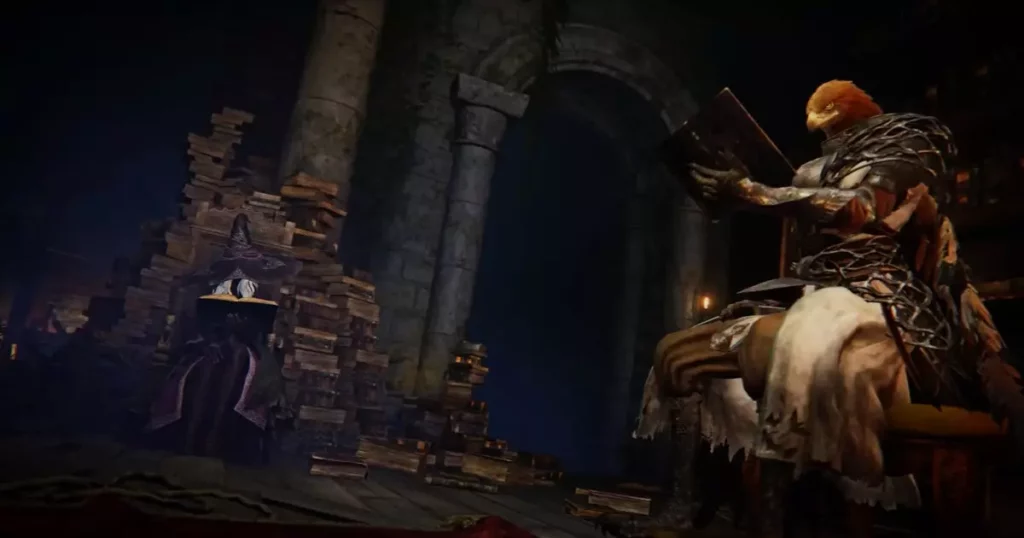In today’s gaming landscape, where character design transcends mere visual appeal and taps into deeper psychological and cultural narratives, few titles exemplify this trend as compellingly as Nightreign. At the forefront of gamers’ minds is the enigmatic Nightreign’s Guardian—a bird-bodied captain wielding a halberd whose design has incited fervent discussions and introspective quests among fans. This fascination reflects a broader cultural appreciation for the complexities of character creation, particularly within the FromSoftware universe known for its intricate lore and dense subtext. The Guardian represents not just a formidable opponent but a symbolic entity that encourages players to delve beneath its feathery surface and confront themes of identity and representation.
The Role of Digital Archaeology and Community Engagement
Zullie The Witch, a notable modder and dataminer, stands at the helm of a recent wave of analysis surrounding the Guardian, invigorating the community with fresh insights. In many ways, this venture resembles digital archaeology; players dissecting 3D models and unearthing hidden meanings create an active dialogue that celebrates collaborative gameplay. This sense of community-driven exploration is not a trivial aspect of modern gaming—it’s a critical lens through which we examine both our interactions with the game and the roles we play within its universe. By banishing the notion of passive consumption, Nightreign highlights the importance of active engagement in gaming culture.
Identity and Symbolism in Character Design
The Guardian’s design, seemingly devoid of any encapsulated human features, dives into the question of identity within the gaming realm. The absence of a human visage prompts speculation, igniting the imaginations of fans eager to unravel the character’s significance. Although Zullie’s findings confirmed that the Guardian is a true avian creation, this revelation does not close the book on interpretations. Instead, it opens discussions on the thematic weight that such decisions carry in a narrative so crowded with symbolism. FromSoftware’s design choices often align with a philosophical inquiry into the nature of identity—multilayered, challenging, and inherently ambiguous.
Contrasts with Customizable Archetypes
The shift from customizable characters to fixed archetypes in Nightreign signifies a notable departure from the model established in games like Elden Ring. While customizable avatars allow players to imprint their identities onto the game, something about the rigid archetypal structures found in Nightreign opens new pathways for storytelling. Here, the narrative stakes evolve, forcing players to grapple with the personalities embedded within these characters, rather than reflecting their personas onto them. This choice raises critical questions about representation and player agency—can a game’s narrative resonate more profoundly when players cannot reshape the characters to their liking?
The Mysterious Wylder
While the Guardian has established itself as a tangible identity, the character of Wylder presents a stark contrast. Cloaked in obscurity, Wylder’s faceless silhouette invites more questions than answers. The playful theorizing that Wylder could embody a universal everyman named “John” invokes a charming sense of connection among players, mirroring the classic archetypes found within the Soulsborne series. The absence of defining characteristics beckons players to project their narratives onto Wylder, engaging in a type of storytelling that thrives on openness and complexity. Rather than detracting from the character, this facelessness invites speculation and enriches community-driven dialogue surrounding the game’s lore.
A Growing Culture of Collaborative Critique
The rising trend of collaborative critique within gaming culture paints a vivid picture of modern player engagement. Platforms such as forums and streaming channels allow for dynamic discussions, where fans shift from mere audience members to active participants in world-building. This evolving landscape witnesses an increasing importance placed on communal insight, whereby shared interpretations and critiques amplify our understanding of character designs and narratives. Gamers morph into digital conversationalists, breathing life into often untold stories by collectively unraveling the tangled threads of lore that envelop creations like Nightreign.
Fostering Emotional Investment Through Artistic Choices
Nightreign’s character design choices evoke not only curiosity but also foster profound emotional investment among players. The Guardian’s absence of human features emphasizes a fundamental exploration of identity in a multifaceted way. Meanwhile, Wylder’s silhouette prompts players to engage their imaginations, eliciting a sense of personal exploration that transcends the game’s mechanics. Together, these elements meld into a rich tapestry of existential inquiry—inviting participants to reflect not only on the game world itself but also on the broader narratives that bind us all together in experiences, both virtual and real.
In a gaming industry where intricate storytelling often plays second fiddle to flashy aesthetics, Nightreign’s design philosophy stands as a testament to the power of engaging narratives, creating an ecosystem rich in exploration, discussion, and emotional connection.









Leave a Reply